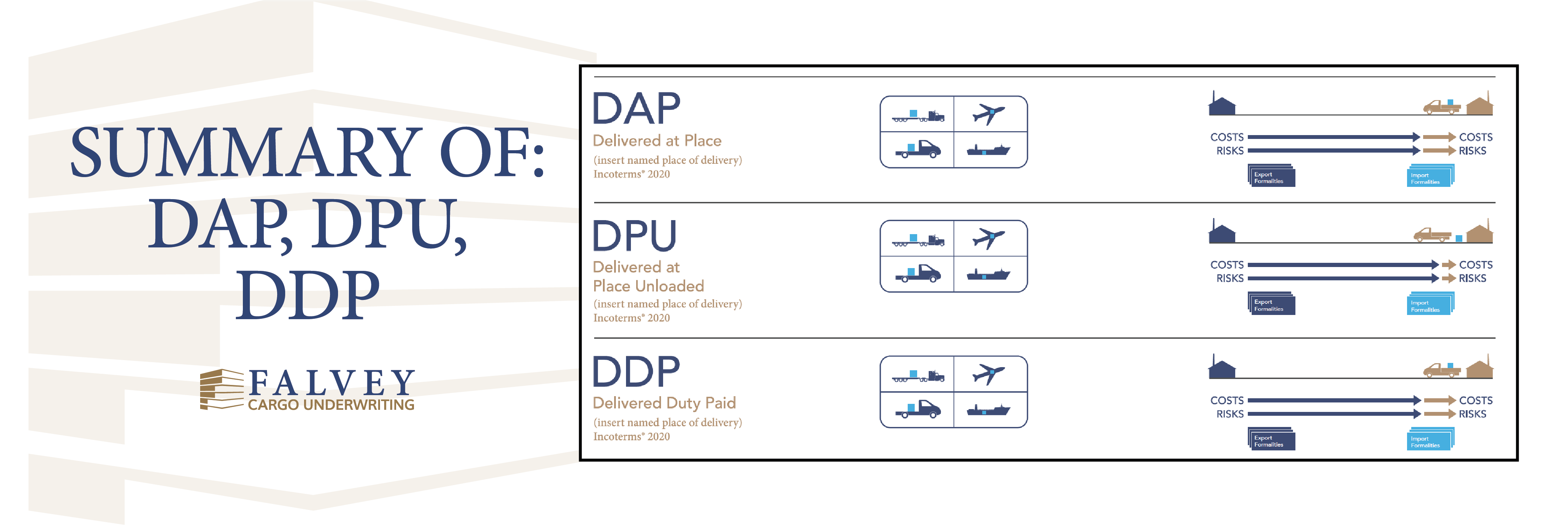In this article, we continue our blog series that explains all 11 rules in Incoterms® 2020 and spotlight DAP, DPU, and DDP. We recommend familiarizing yourself with these rules so you can utilize them in your everyday sales transactions .
Note: If you need a breakdown of the first four Incoterms, check out our previous article that outlines EXW, FCA, CPT, and CIP. Or, if you want a quick refresher of what these rules all mean, check out our Incoterms infographic.
Let’s dive into the “D” rules:
- DAP: Delivered at Place (Named Place of Destination)
Under DAP, the seller is responsible for arranging and delivering goods to the agreed-upon destination or means of transport, which is considered a moderate to high risk. The seller oversees all costs associated with the delivery of the goods up until they are at the buyer’s disposal still loaded onto the arriving means of transport. The risk is then transferred to the buyer when the goods are ready for unloading. This rule determines the buyer is responsible for covering taxes and import duties.
- DPU: Delivered at Place Unloaded (Named Place of Destination)
Previously known as Delivered At Terminal (DAT), this renamed term now encompasses deliveries to all places, not just terminals. Under DPU, the seller bears all responsibilities—including arranging and transporting the goods—up until the goods are unloaded from the arriving means of transport at the named place of destination. The buyer bears all risks and costs from that point on to the final destination
- DDP: Delivered Duty Paid (Named Place of Destination)
DDP determines the seller is responsible for not only organizing and delivering the goods to the named place of delivery, but also for covering the associated costs. This is the only term that requires the seller to oversee the import clearance and payment of any import duty . Because of this, this term holds the maximum risk for the seller. The risk is not transferred to the buyer until the goods are at the named destination and cleared for import.
It’s important to understand these rules as they determine how risks and responsibilities are allocated to buyers and sellers involved in a commercial transaction. Understanding these rules may provide more direction on how you draft or update your standard contracts.
To learn more about the remaining three terms, check out our upcoming article. You can also contact us at any time to see how these updates could impact your cargo coverage.




